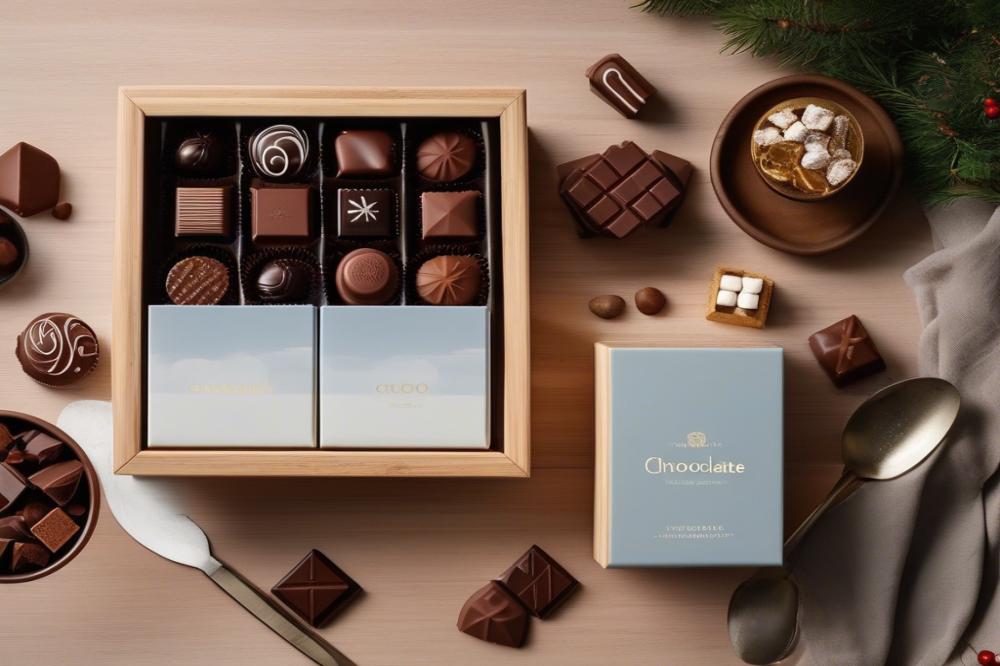Introduction
Aero Mint is a chocolate that stands out in the vast world of candy bars. Known for its distinctive airy texture, this confectionery has captured the hearts of many chocolate fans globally. Its combination of rich chocolate and cool mint flavor creates a delightful balance that keeps consumers coming back for more. The sensation of biting into this treat is not just about taste; it’s also about the experience.
Understanding the magic behind this beloved chocolate involves exploring the concept of chocolate aeration. This important process introduces tiny bubbles into the chocolate, resulting in a light and fluffy mouthfeel. The unique bubble structure transforms a simple chocolate bar into something exciting. Sensory experience plays a critical role here; our enjoyment of food is often tied to how it feels in our mouths.
Food technology has made significant strides in confectionery innovation. The development of advanced methods for aerating chocolate has allowed for diverse textures that appeal to many palates. When you bite into Aero Mint, the melting sensation of the chocolate combines effortlessly with the refreshing mint, creating an enjoyable contrast. Such innovations in candy production lead to products that are not just enjoyable to eat, but also offer a distinct combination of flavors and textures. chocolate aeration is central to achieving this effect, bringing a sense of lightness to every bite.
The Art of Chocolate Aeration

Chocolate aeration is a fascinating process in candy production. It transforms regular chocolate into a delightful airy confection. This transformation involves incorporating tiny air bubbles, which create a light and melting sensation when eaten. The secret lies in the precise technique used during blending and tempering.
When chocolate is made, it starts with cacao beans. After roasting, the beans are ground to produce chocolate liquor. During this stage, the chocolate is heated to a specific temperature. Heating makes the chocolate flow smoothly, allowing for better aeration. As the chocolate is whisked, air is introduced into the mixture. This is the beginning of the bubble structure that will define its texture.
In addition to heat, the ingredients play a crucial role in achieving the desired mouthfeel. Adding sugar and emulsifiers alters the consistency of the chocolate. These ingredients help trap air within the mixture, creating stability for the forming bubbles. A finely tuned balance of components leads to the perfect airy texture. When mint flavor is added, it enhances the overall sensory experience, complementing the lightness of the chocolate.
Temperature control is vital throughout the aeration process. If the chocolate is too hot, it can lose its structure, leading to larger undesirable bubbles. Conversely, too much cooling can prevent proper aeration. This is where food technology meets culinary art, allowing chocolate makers to explore different temperatures and mixing methods. Each variation can lead to unique results, creating diverse products within the same confectionery category.
The science of texture influences how we perceive chocolate. An airy texture provides a different eating experience compared to dense chocolate. As consumers, we often prefer a light and crisp bite that melts quickly in our mouths. This is why the precision of aeration is so important. It affects how the chocolate interacts with our taste buds and overall enjoyment.
In summary, chocolate aeration is an essential part of creating an enjoyable confection. It involves careful management of temperature and ingredients to form a delightful bubble structure. The role of air in chocolate production cannot be understated. Airy textures invite people to savor and enjoy every bite. By combining chocolate’s rich qualities with a refreshing mint flavor, manufacturers achieve a perfect blend of taste and sensation.
Understanding Mint Flavor in Aero Mint

Mint flavor plays a crucial role in the experience of enjoying a chocolate treat. Many people find that the coolness of mint adds excitement to the sweet taste of chocolate. In confectionery innovation, the combination of these flavors creates something memorable. This pairing is not simply random; it involves deep insights from texture science and flavor chemistry.
The science of flavor pairing reveals that certain tastes elevate one another. Chocolate’s rich, creamy texture contrasts brilliantly with mint’s fresh, cooling profile. Such balance enhances the overall mouthfeel, making each bite more enjoyable. When combined with chocolate aeration, mint elevates the treat into a delightful sensory experience.
In the candy production process, the bubble structure within chocolate allows the mint flavor to infuse thoroughly. During the melting sensation of the chocolate, the refreshing qualities of mint become prominent. This process engages the senses in a way few other flavors can. Each element contributes to a unique experience, where the lightness of the texture complements the invigorating taste.
The impact of mint goes beyond mere flavor; it influences consumer perception as well. People often associate mint with freshness, making the candy feel lighter. Such feelings can affect their enjoyment and desire to indulge in this treat. Knowledge of food technology continues to enhance the ways these flavors and textures are combined.
Ultimately, when consumers bite into the airy delight, the interplay of components becomes clear. The refreshing burst of mint dances alongside the softness of the chocolate. This relationship cultivates a remarkable treat that draws people back for more. Observing how these elements work together illustrates why the mint flavor remains a favorite in sweet foods.
Texture Science and Mouthfeel
The science of texture plays a crucial role in how we experience chocolate. Each bite of Aero Mint brings a delightful, light quality. This airy texture results from the clever use of chocolate aeration. Bubbles trap air during the manufacturing process, creating a unique bubble structure within the chocolate. As a result, the candy feels different in the mouth compared to traditional chocolates.
Mint flavor enhances this experience. It boosts the refreshing quality that complements the airy texture. When you take a bite, the combination of the cool mint and fluffiness creates an exciting sensory experience. The melting sensation adds another layer of enjoyment, as the bubbles dissolve and release the flavors.
Texture science focuses on how different factors influence mouthfeel. Many people might not realize how important these factors are in confectionery innovation. For example, variations in chocolate formulation affect how it melts and how it feels against the tongue. This is essential in food technology, as it helps create enjoyable products.
The balance between density and lightness also impacts the final product. Creating an optimal texture requires precision and skill in candy production. When correctly done, this can enhance the overall chocolate experience significantly. Consumers often choose sweets based on the mouthfeel, which affects their enjoyment and satisfaction.
Ultimately, the interplay of aeration and flavor in chocolate, especially with mint, illustrates the beauty of texture science. It’s fascinating how these aspects work together to form a delicious treat. Each element complements the others, making in-depth texture analysis so valuable.
Confectionery Innovation and Food Technology
The world of candy production has undergone remarkable changes over the years. Advances in chocolate aeration played a crucial role in developing lighter textures. These innovations allow for products with a distinctive mouthfeel, capturing the imagination of candy lovers everywhere.
Food technology is central to the creation of new flavors and textures in candy. Processes that manipulate bubble structure within chocolate create airy textures that impress the taste buds. This use of aeration not only enhances the eating experience but also contributes to the overall sensory experience of candies, making them delightful treats.
Different techniques, such as whipping or incorporating gas, can create pockets of air within the chocolate. As a result, these techniques help produce a light product that melts quickly in the mouth. The sensation of mint flavor combined with the airy chocolate makes for an exciting contrast, elevating the enjoyment of sweets.
Looking ahead, trends in confectionery innovation will likely focus on even more sophisticated methods of aeration. Consumers may seek out candies that offer unusual combinations of flavors and textures. Efforts will be made to exploit new technologies that enhance both the melting sensation and the overall enjoyment of various treats.
Ultimately, the future promises exciting developments in the candy industry. Innovations in sensory experiences will invite taste testers to explore novel combinations. As chocolate production evolves, enticing new kinds of treats will emerge that captivate both young and old. The fusion of advanced techniques and creative flavors paints a bright future for confectionery enthusiasts.
The Melting Sensation of Aero Mint
Melting sensations play a crucial role in our enjoyment of chocolate. When we take a bite, the unique bubble structure inside creates a distinct experience. Each bubble filled with air contributes to the lightness of the texture. This aeration is designed specifically for a pleasurable melt-in-your-mouth sensation.
As the chocolate begins to dissolve, the fresh mint flavor bursts forth, enhancing the entire tasting experience. This combination of mint and chocolate is not only delightful but also a product of careful texture science. Through advanced food technology, the candy production process ensures that the light, airy texture remains consistent. The result is a confectionery innovation that sets it apart from other chocolate bars.
Other chocolates might feel dense or hard when they melt. In contrast, the melting properties of Aero Mint create a soothing mouthfeel. Unlike traditional bars, the bubbles allow for a gentle release of flavor. This not only provides a refreshing taste but also changes how the candy interacts with our taste buds. Each bite invites a sensory experience that is both cooling and satisfying.
The balance of texture and flavor can shift dramatically in different chocolates. While some melt slowly and cling to the palate, Aero Mint offers a quick, brilliant melt. This efficient melting makes the enjoyment fleeting but impactful. The airy bubbles give way easily, preventing a heavy feeling that can sometimes accompany denser chocolates.
Overall, examining the melting sensation reveals the artistry behind candy production. This chocolate achieves an elegant interplay between flavor and texture. As consumers, we recognize and appreciate the complexity that comes from such innovation. The blend of aeration and rich mint creates an experience beyond ordinary confectionery. Each morsel provides just the right amount of indulgence without being overwhelming.
Final Thoughts on the Science of Airy Texture
To wrap up, several key scientific elements contribute significantly to the light, airy texture found in Aero Mint. First and foremost, the process of chocolate aeration plays a crucial role. This technique creates tiny bubbles within the chocolate, leading to a distinct sensation when you bite into it. These bubbles give the chocolate a delicate structure, making each piece feel almost weightless on the tongue.
The infusion of mint flavor adds another layer to the overall experience. Its refreshing taste complements the airy texture. This combination not only tantalizes the taste buds but also enhances the enjoyment of the treat. Consumers often seek out this specific and enjoyable sensory experience when reaching for their favorite chocolate bars.
In a market filled with various options, the science behind the lightness sets this chocolate apart. Understanding the mechanics behind its texture deepens appreciation for such treats. The unique combination of aeration and mint creates both a delightful flavor profile and an unforgettable mouthfeel.
Next time you indulge in this treat, take a moment to explore the nuances. Savor the way the chocolate melts and the mint refreshes. Each bite reveals the thoughtful process that goes into crafting a product that stands out on the global stage of famous chocolate bars. You might discover something new about this delightful favorite.



